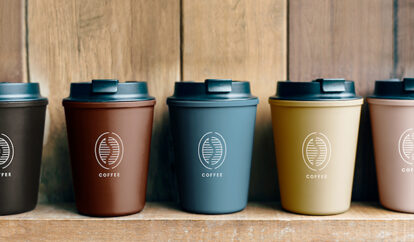Menus are vital for your business. In the most basic sense, they present your food and drink items to potential customers. Yet, menus are so much more than that.
With menus, you can promote a cohesive brand story, upsell menu items. Menus also give a good first impression to customers, whether in-store or online.
There are many different types of menus available for restaurants. Each type offers different uses and benefits. If you’re opening a new restaurant or looking to refresh your menu strategy, this guide can help you. To learn more about the different types of menus and how they can help improve your marketing strategy, keep reading.
1. The Staple: A Dine-In Menu
A dine-in menu is a staple for all types of sit-down and fast-casual restaurants. Your menu provides a snapshot of your restaurant and it’s the one piece of marketing that every single customer will see and read. And of course, your menu reflects your business. It should capture your brand, personality, and theme.
A dine-in menu informs, but it also doubles as a marketing tool, introducing your brand and highlighting high-margin, desirable dishes. Mouth-watering wording and eye-catching design will give your customers the best first impression of your food.
You can also use your dine-in menu to upsell certain items by highlighting them, either with text or an image. By using this tactic, you can increase your revenue on specialty and high-margin items.
2. An Easy-to-Use Takeout Menu
If you offer takeout or delivery services, having a well-designed takeout menu is vital. Takeout menus present another opportunity to market your restaurant to potential customers. By offering takeout menus in-house, customers are able to take them and save them for use at a later date. By doing this, they’re more likely to remember your restaurant and choose to order from you when they’re craving takeout.
Because of this, you should make sure that your takeout menu design is out of this world. Not only should you match it to your dine-in menu design, but you should make sure that it emanates the vibe of your restaurant.
When someone thumbs through their pile of takeout menus looking for a place to eat, you want your menu to stand out. Your takeout menu serves as a precursor and first impression to the food they’re ordering. If you have a dull or poorly designed menu, they may infer that your food is subpar, too.
Takeout menus should make it as easy as possible for customers to place an order. You should always list your contact information on the front page. If customers can place an order through your website, using a QR code is a great way to make ordering quick and easy.
3. Perfect for Upselling: Dessert and Cocktail Menus
Successful restaurant marketing often includes the use of dessert and cocktail menus, as they provide excellent opportunities for upselling to your customers. Both desserts and cocktails are high-margin items. Because of this, you should always advertise these options to your customers. By having a specialized menu that matches the vibe and theme of your restaurant, customers may be more inclined to take a peek at what you have to offer.
You can display your dessert and cocktail menus in a variety of different ways. You can use table tents or half-page menus. These menus serve their purpose best when left on the table, annoying customers to look at them before and throughout their meal.
Like on your dine-in menu, you’ll want to use copy that makes your customer’s mouths water. Get them excited about your decadent dessert options!
4. Digital Menu Boards for Fast Casual Restaurants and Coffee Shops
So far, we’ve talked a lot about menu design and necessities for high-end or full-service restaurants. For fast-casual restaurants and coffee shops, slightly different tactics are needed.
Digital menu boards make it easy for your customers to see your menu offerings from anywhere in your storefront. They work well in conjunction with takeout menus or dine-in menus (for those who prefer to look at a menu up close).
If patrons order at a bar or register in your restaurant, use menu boards as an alternative to takeout or dine-in menus. By using a digital menu board, restaurants can show their personality and match the theming of their restaurant. Opting for digital menu boards over regular menu boards allows you to edit your menus when you add new items or as the seasons change.
5. A Necessity: The Online Menu
Don’t overlook online menus, as they offer many benefits for all types of restaurants. 90% of people research restaurants before visiting. Your restaurant should have a solid online presence to ensure users can find you.
That means having a well-designed website where your menu is accessible. Most people want to know precisely what you have to offer before heading into your restaurant. Your online menu is the perfect opportunity to make a solid first impression on your potential customers.
By designing a high-quality online menu with verbiage that makes potential customers drool, you’ll catch their interest. Once you get them in the door, you can wow them with the rest of your high-quality, well-branded, cohesive menus and themes.
Sign up for our free weekly TouchBistro Newsletter





